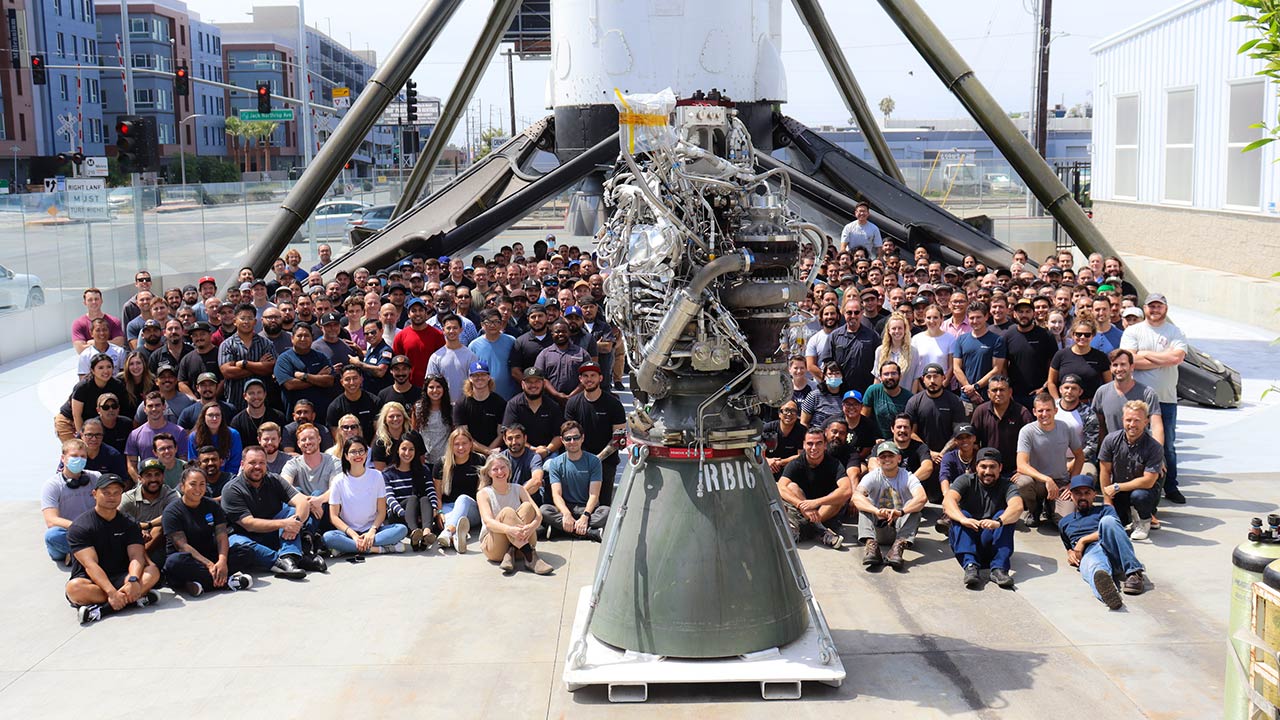Rocket engineers and employees of the Space Exploration Technologies Corp. (SpaceX) celebrated the build of the 100th Raptor engine on Monday.
CEO Elon Musk had revealed in May that the production of the Raptor engines has ramped up and SpaceX is producing one every 48 hours now. This is a super-big and super-powerful rocket engine that takes an immense amount of engineering effort to produce. So, 1 every 48 hours is a big achievement on the SpaceX part.
SpaceX constantly needs this new breed of rocket engines for Starship high-altitude flight tests and now even more since the static fire tests for the Super Heavy rocket booster prototypes have begun.

This 100th Raptor engine for Starship and Super Heavy rocket booster was completed at the SpaceX rocket factory and headquarters in Hawthorne, California.
To further boost the production of the Raptor engines, SpaceX is starting to build another Raptor production factory at its rocket development facility in McGregor, Texas.

“We are breaking ground soon on a second Raptor factory at SpaceX Texas test site. This will focus on volume production of Raptor 2, while California factory will make Raptor Vacuum & new, experimental designs,” Elon Musk tweeted earlier this month.

“By “volume production”, I mean 2 to 4 engines per day. That’s super high volume for big rocket engines, but low volume by automotive standards,” Elon Musk further explained in a follow-up tweet.
According to Elon Musk, the production of Starship, Super Heavy, and Raptor engines needs to constantly ramp up at SpaceX in order to transport a large number of humans to Mars and build a sustainable city on the red planet by 2050.
SpaceX performed the first Super Heavy rocket booster static fire test last week, in this preliminary test, the booster was equipped with only 3 engines. However, SpaceX aims to ramp up to 32 Raptors on the Super Heavy for full-scale testing later this year.
Even a 33 Raptor engine config on the Super Heavy booster is under consideration as Elon Musk endorsed a render of a 20-10-3 configuration on Twitter.
“Very accurate. Some of these design trades are still open, but will be resolved soon,” Musk replied to the Raptor configuration design render above.
The 20-10-3 configuration = 20 fixed engines installed in the outer ring, 10 gimbal engines in the inner ring, and 3 gimbals in the center.
Congratulations to SpaceX on this big achievement and good luck for future ventures, still a lot of hard work remaining as the mission is so grand “making human life multi-planetary.”
SpaceX fired the first Raptor engine back in Feb 2019, Musk had proudly shared the following photo and video of this event at the time.
Stay tuned for future updates on Starship and SpaceX, follow us on:
Google News | Flipboard | RSS (Feedly).

